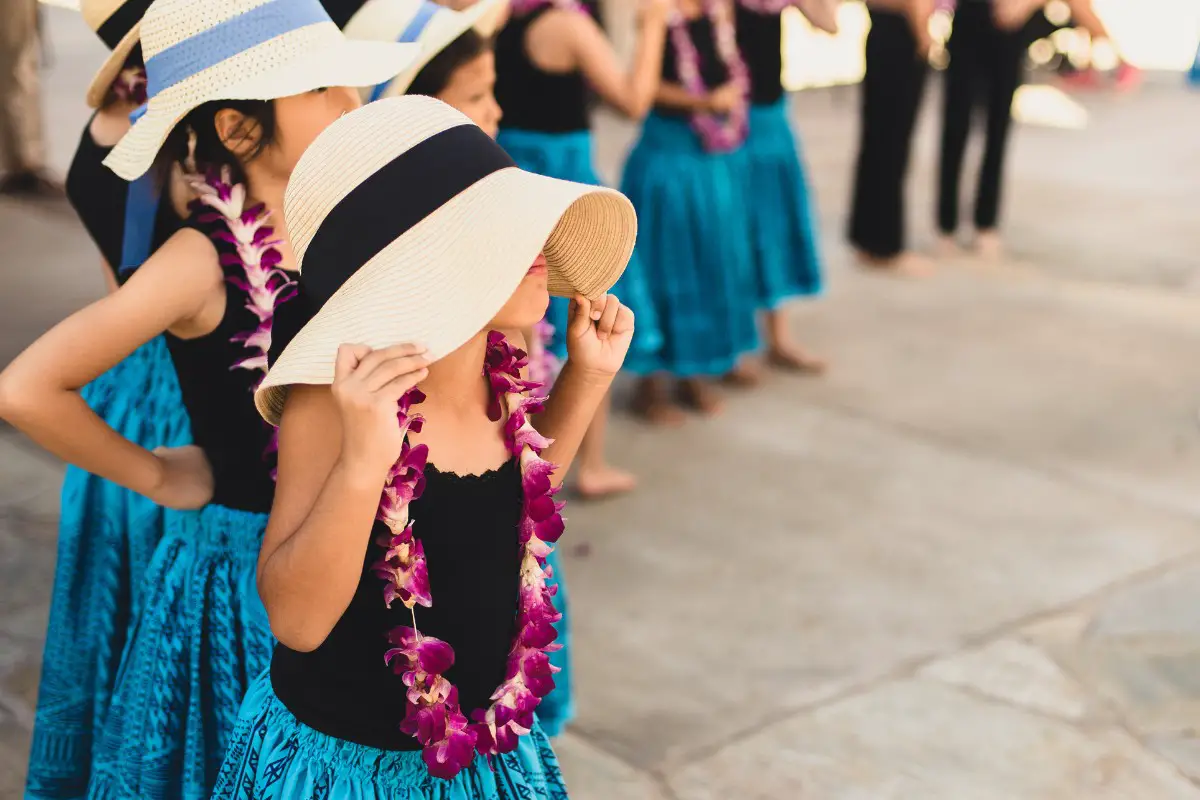It can often seem that leis are everywhere, not just Hawaii. Considering leis are a Hawaiian tradition, though, it is only natural to wonder if it is cultural appropriation.
Here is what you need to know about leis and whether or not they fall under cultural appropriation:
Is Wearing a Lei a Form of Cultural Appropriation?
This depends on the circumstance – for instance, if you have been given a lei by a person of Hawaiian descent, particularly in Hawaii then it is not considered cultural appropriation – however, if you are wearing leis at a Hawaiian themed party on the mainland then it is considered appropriation.
What is the Cultural Significance of Leis?
Leis have a long history in Hawaii. They were first brought over by the Polynesians who made their way from Tahiti.

They may be largely made up of flowers now but in earlier days they were created from flowers, seeds, nuts, and even animal bone and teeth.
Although leis were originally a way of beautifying people, they gained a stronger meaning between communities. Due to this, leis were considered a symbol of Hawaii, religion, and hula.
In fact, when two chiefs from warring tribes exchanged leis, they did so as a sign of peace.
People give each other leis as a sign of friendship and love. Therefore, you must always expect a lei and should never reject one from a native Hawaiian as it is considered highly offensive.
What’s more, there is a whole ceremony of removing the lei once it is presented to you. You can never remove it in the presence of the person who gave it to you.
Instead, you must wait until once of you has moved to a different location. You must then bury the lei in your backyard or hang it on a tree limb.
In case you want to send it into the ocean, you must first untie the knot and let the flowers float freely in the water.
Why Can Leis Be Considered Cultural Appropriation
Have you noticed how leis are usually found at Hawaii-themed parties? However, these are never thrown by native Hawaiians.
Instead, it is by people who have borrowed and diluted certain aspects of Hawaiian culture to have a good time. In many cases, these parties and the elements surrounding them are based of stereotypical ideas about Hawaii.
In reality, Hawaii has a long, rich, and beautiful culture – one that few people take the time or trouble to understand.
This especially goes for leis.
In places outside of Hawaii, most of the leis are plastic as flower ones can be expensive and wilt quickly too. This is quite unnatural considering the importance of the lei.
Furthermore, most people give away or accept leis without any consideration at all. They don’t observe any of the traditions that are associated with the lei, thus, stripping it of its meaning.
Instead, it is turned into a party favor or a decoration.
Whenever this is done, it is a slap in the face of people who have a deep symbolism for their lei and take great measures to maintain the respect surrounding it.
Understanding the Troubling History Between the US and Hawaii
Despite Hawaii being considered a part of the US, the history between the US and Hawaii is a rocky one.
This is because Hawaii existed as an independent monarchy for a long time until the US troops invaded Hawaii and overthrew this monarchy. The people of Hawaii didn’t want to be a US state but they were forced into it nonetheless.
The problems don’t end here. Throughout the years, the US government has attempted to unfairly tax Hawaiians while simultaneously trying to strip away their history, traditions, and even the very land they live on.
Why are Leis Especially Problematic Now?
The wearing of leis by non Hawaiians can be seen as especially problematic at this time.
For one thing, the people of Hawaii are fighting harder than ever to preserve their culture, cultural heritage, and their home. This includes trying to ensure that people don’t build on sacred land or tear down important structures.

Therefore, wearing leis at parties on the mainland or elsewhere can be seen as making a mockery of this struggle.
To add to this, the islands are suffering from over tourism, skyrocketing property prices due to mainlanders claiming permanent residency, and more.
It is important that people don’t make light of Hawaiian culture, particularly when so many people are trying to preserve it in their homeland.
Are Leis Ever Appropriate?
There are times when leis may be considered appropriate. In particular, if you are visiting Hawaii and a local gifts you with a lei, you must accept.
However, make sure to read up on the proper protocol. This includes how to wear the lei properly, how to remove it respectfully, and how to store it properly. This proves that you respect the culture and what the lei stands for.
You can also accept a lei from a native Hawaiian on the mainland or somewhere else. They have the right to give you the lei so it would be rude to reject the offer.
Once again, though, make sure that you ask about how to accept, wear, and remove the lei so that you can show your host that you respect their culture and beliefs.
Is Wearing a Lei Cultural Appropriation?
If you aren’t Hawaiian or haven’t been given a lei by a native Hawaiian then you wearing a lei is a form of cultural appropriation – this is because they are various rules and rituals regarding a lei and if you don’t perform them you aren’t giving the lei the proper respect.
